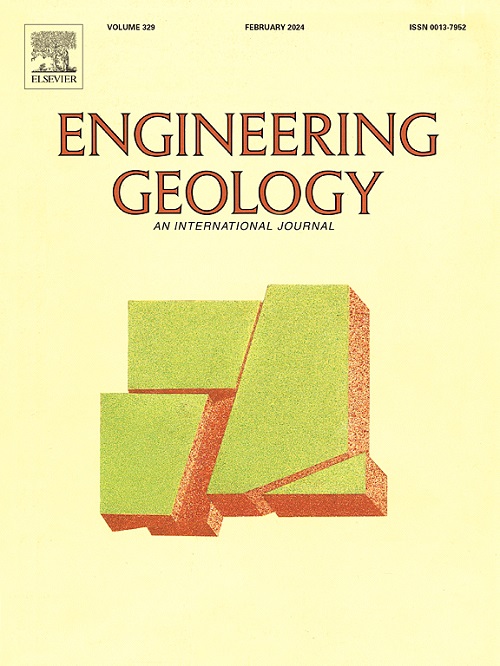Determining a representative elementary area for soil desiccation cracking
IF 6.9
1区 工程技术
Q1 ENGINEERING, GEOLOGICAL
引用次数: 0
Abstract
Laboratory tests involving soil desiccation cracking are subjected to geometrical boundary constraints that are not always present in field conditions. To better understand the effects of sample geometry on desiccation cracks, several researchers have used controlled climatic conditions coupled with image analysis to accurately quantify the crack characteristics of soil samples subjected to laboratory studies. However, to date, no known studies in the literature present a simple method for determining the appropriate sample size for laboratory desiccation cracking testing that ensures the effects of boundary conditions are minimized. The primary objective of this research is to address this gap by proposing an experimental approach to determine a representative elementary area (REA) for soil desiccation cracking studies in the laboratory. To achieve this, we conducted four series of tests using an environmental chamber. One preliminary test series was carried out to identify the optimal sample preparation and REA testing techniques. Subsequently, three additional series of REA tests were conducted with sample thicknesses of 2.5, 5.0, and 7.5 mm to explore the impact of sample size on the REA. The REA for each sample thickness was determined by examining the surface area at which the surface crack ratio (RSC) for the sample was unaffected by boundary constraints. The results indicate that as sample thickness increases, REA increases. Further research is needed to determine how the REA is affected by sample shape and soil type.
确定具有代表性的土壤干裂基本区
涉及土壤干燥开裂的实验室试验受到几何边界约束,这在现场条件下并不总是存在。为了更好地理解样品几何形状对干燥裂缝的影响,一些研究人员使用控制气候条件结合图像分析来精确量化实验室研究土壤样品的裂缝特征。然而,迄今为止,在文献中没有已知的研究提出了一种简单的方法来确定实验室干燥开裂测试的适当样本量,以确保边界条件的影响最小化。本研究的主要目的是通过提出一种实验方法来确定实验室土壤干燥开裂研究的代表性基本区域(REA)来解决这一差距。为此,我们使用环境箱进行了四个系列的测试。进行了一系列初步试验,以确定最佳的样品制备方法和REA测试技术。随后,我们在2.5、5.0和7.5 mm的样品厚度下进行了另外三组REA测试,以探索样品尺寸对REA的影响。通过检测样品的表面裂纹比(RSC)不受边界约束影响的表面面积来确定每种样品厚度的REA。结果表明,随着样品厚度的增加,REA增大。样品形状和土壤类型对REA的影响尚需进一步研究。
本文章由计算机程序翻译,如有差异,请以英文原文为准。
求助全文
约1分钟内获得全文
求助全文
来源期刊

Engineering Geology
地学-地球科学综合
CiteScore
13.70
自引率
12.20%
发文量
327
审稿时长
5.6 months
期刊介绍:
Engineering Geology, an international interdisciplinary journal, serves as a bridge between earth sciences and engineering, focusing on geological and geotechnical engineering. It welcomes studies with relevance to engineering, environmental concerns, and safety, catering to engineering geologists with backgrounds in geology or civil/mining engineering. Topics include applied geomorphology, structural geology, geophysics, geochemistry, environmental geology, hydrogeology, land use planning, natural hazards, remote sensing, soil and rock mechanics, and applied geotechnical engineering. The journal provides a platform for research at the intersection of geology and engineering disciplines.
 求助内容:
求助内容: 应助结果提醒方式:
应助结果提醒方式:


